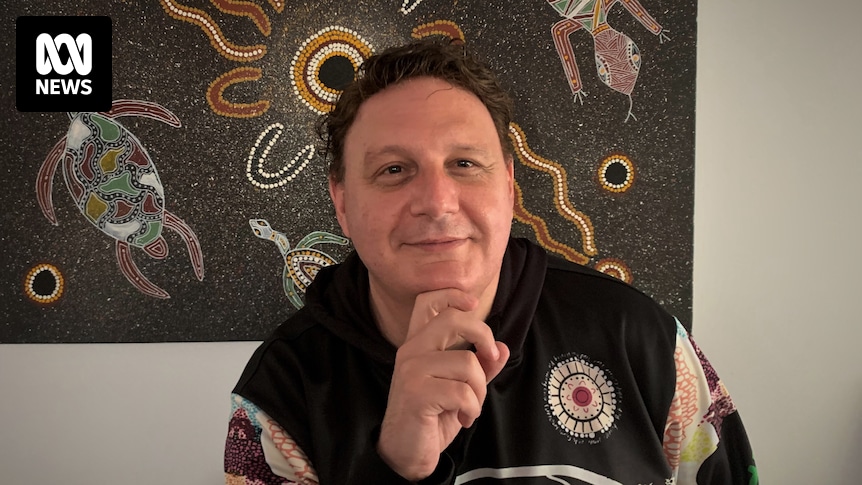AJ Williams was just 15 years old, lying in a hospital bed, when a psychologist told him they didn’t know how to treat him.
His condition wasn’t rare – diagnosed with bulimia, AJ was one of more than 1 million people living with an eating disorder in Australia.
But he didn’t fit what many experts say is a narrow stereotype for the illness of “rich white women”.
“I kept being told that I didn’t meet the criteria,” AJ said.
“They didn’t know how to treat me, because there was nothing in research on how to treat a young Aboriginal male.”
There are concerns many First Nations people aren’t seeking help for eating disorders. (105.7 ABC Darwin: Emilia Terzon)
‘I was already feeling out of place’
If you or anyone you know needs help with an eating disorder:
For the Wiradjuri and Wotjobulak man, it had been an agonising, secretive three-year battle with the disease.
Suffering an abusive home life and relentless bullying at school, he was 15 when he started purging.
“I couldn’t control anything,” he said.
“All I could control was what I put in my mouth, and what I could get out of my body.”
His eating disorder continued undetected, until one day, he was hospitalised after passing out at school.
“I was already feeling out of place, I was already feeling not accepted,” he said.
“And then to be told they don’t know how to help me – I struggled a lot.”
First Nations people more at risk
AJ is not alone.
Signs your child has an eating disorder
Experts say there is still a pervasive misconception that eating disorders are a “rich white woman’s issue”.
But the data paints a starkly different picture.
According to the Butterfly Foundation, Aboriginal and Torres Strait Islander people experience eating disorders at a similar rate to others in Australia – a rate of 1 in 10 people.
However, recent research shows rates could be even higher.
A 2020 study in South Australia showed almost 30 per cent of Indigenous adults met the criteria for an eating disorder, compared to 18 per cent of non-Indigenous adults.
Meanwhile a 2017 study in NSW found Aboriginal adolescents were 1.4 times more likely to have an eating disorder than non-Aboriginal adolescents.
Purging was twice as prevalent in Indigenous youth.
Study author and clinical psychologist Dr Deborah Mitchison said despite these alarming figures, there’s still barely any research in the space.
“There’s been less than 10 studies ever conducted, looking at this population,” she said.
Clinical psychologist Dr Deborah Mitchison says there’s very little research in this space. (Supplied: Dr Deborah Mitchison)
Falling through the cracks
Dr Mitchison said a lack of funding or focus on this issue meant too many First Nations people were falling through the cracks.
Anxiety is Australia’s hidden pandemic
“Health services don’t really see Aboriginal Australians rocking up and asking for treatment for an eating disorder,” she said.
AJ said in his discussions with community, he had noticed a concerning lack of awareness and understanding of the illness.
“There’s kind of a belief out there in some communities that eating disorders don’t exist,” he said.
“And when you’re talking to some people, they’ll say, ‘Sorry, we don’t want any’, like we’re going to come out and hand them out to people.”
He said this meant many Indigenous people didn’t recognise they were struggling with disordered eating, and therefore didn’t seek help.
Worimi woman Dr Liz Dale has a lived experience with eating disorders. (Supplied: Dr Liz Dale)
‘Why are you doing this to us?’
There are concerns this lack of awareness has also allowed a culture of shame and stigma to breed around the illness.
For Worimi woman Liz Dale, this is all too familiar.
She still remembers the waves of guilt and shame she felt, opening up to some family members about her eating disorder.
“They said I was a stupid, stupid girl and should just get over it,” she said.
“Some people said to me, ‘Just eat the damn food’, not really understanding what was happening underneath.”
Liz first started struggling with anorexia when she was in Year 7.
Relentlessly bullied at school, everything changed when she lost weight following a growth spurt.
“All of a sudden people started talking to me, and boys who used to tease me started asking me out,” she said.
It would be another 16 years of “living in a cage” before she sought help.
But even then, it wasn’t what she needed.
Liz Dale was bullied throughout primary school for her weight. (Supplied: Liz Dale)
Lack of culturally safe treatment
Today, Liz is a clinical psychologist and senior lecturer at the University of Wollongong, specialising in Indigenous people’s lived experiences with eating disorders.
It’s a passion sparked by her own treatment journey, which she said was at times cold, clinical, even dehumanising.
“I wasn’t treated as a cultural being, as a spiritual being, as a connected being,” she said.
She’s calling urgently for more culturally safe eating disorder care for Indigenous Australians.
Fears anorexia, eating disorders in boys going undiagnosed
“The mainstream treatment sector is not equipped to support Aboriginal people at all,” she said.
“It is a very western, white model that’s just focused on symptom resolution.
“It lacks the perspective and the approach to health and well being that I hold innately as an Aboriginal person, which is a holistic view of life.”
But until that is achieved, she fears First Nations people will continue to suffer in silence.
“There’s very limited research, there are no current policies or best practice resources driving the way Aboriginal people are experiencing eating disorders, or what recovery might look like for them or treatment might look like for them,” she said.
“Absolutely we’re falling through the gaps.”
Find more local news
Browse for your location and find more local ABC News and information

